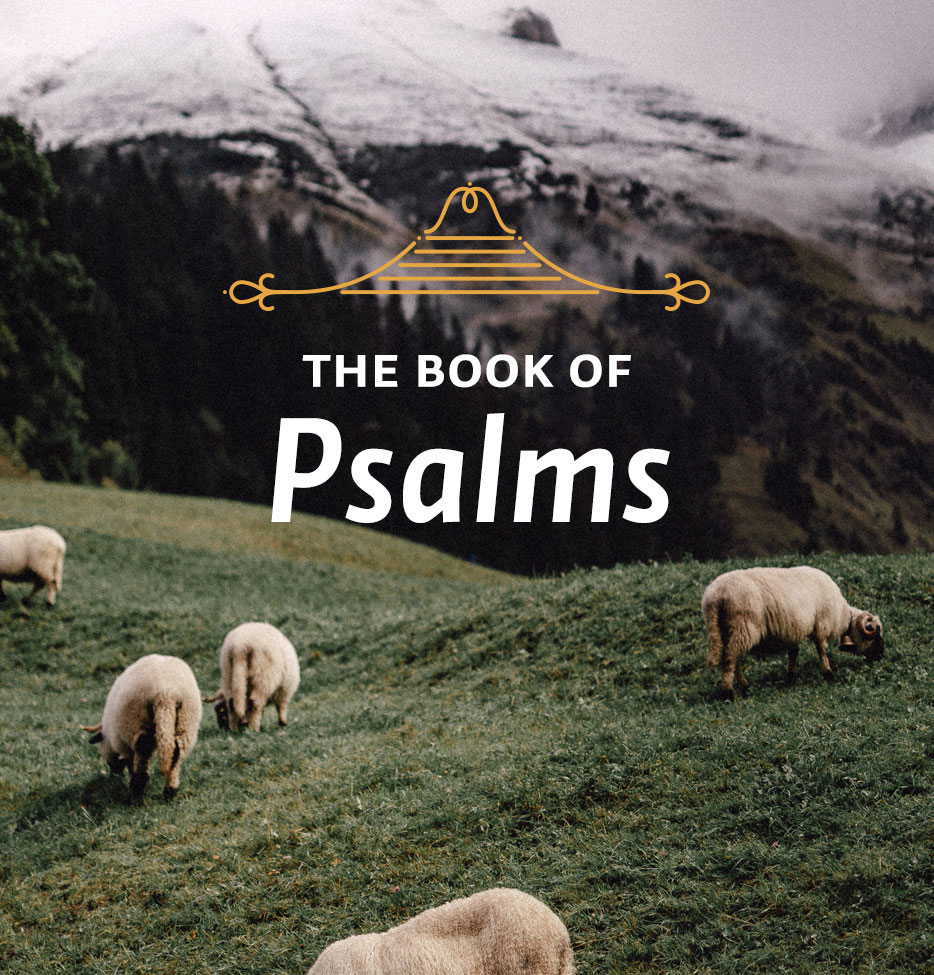Theme: A Technical Problem
In this week’s lessons we look at some reasons why David praises the Lord, and see that even his prayer requests are offered with the end result of praise in mind.
Scripture: Psalm 9:1-20
Before we begin a careful study of this first praise hymn, there is a technical problem that we need to look at, involving this psalm and Psalm 10, which follows it. It arises from the fact that in some versions of the Bible, Psalm 9 and Psalm 10 are printed together as one psalm. Is that right? Does Psalm 9 belong with Psalm 10? Were they originally one? Should they be put back together as one psalm? Or should they be kept separate?
Here are the arguments in favor of their being one composition:
1. As I have just mentioned, some versions of the Old Testament treat them as one. The Greek translation of the Old Testament, the version known as the Septuagint, does this, and so does the Latin Vulgate, the translation made by Saint Jerome, which was for years the chief version of the Roman Catholic Church. As a result of this the numbering of the psalms differs between some Roman Catholic Bibles and virtually all Protestant ones. In versions stemming from the Septuagint the numbering is the same up to Psalm 8. But here the numbers begin to vary, and they do not get back together again until Psalm 148.1 Clearly some ancient scholars considered Psalms 9 and 10 to be one.
2. Psalm 10 lacks an introductory title, which is unusual for the first book of the Psalter (Psalms 1-41). With the exception of the two introductory psalms, all the other psalms have titles except Psalms 10 and 33. This suggests that Psalms 9 and 10 might originally have been together.
3. The strongest argument for joining the two psalms is the existence of an acrostic pattern which begins in the first psalm and continues in the second. An acrostic psalm is one in which lines or stanzas of the psalm begin with consecutive letters of the Hebrew alphabet. The best known of these is Psalm 119, which contains twenty-two units of eight verses each, each beginning with the proper sequential letter of the alphabet. In the New International Version, the Hebrew letters are used as headings for each section. But there are also other acrostic psalms, some utilizing the entire alphabet, others doing so incompletely. Psalms 37, 111, 112 and 119 are complete. Psalms 9-10, 25, 34 and 145 have partial alphabets.
In the case of Psalms 9 and 10 the situation is this: Psalm 9 contains verses beginning with the alphabet’s first eleven letters (that is, half of them), but omitting daleth (the letter “d”). Psalm 10 uses the second half of the alphabet, beginning with lamedh (the letter “l”), but three letters are missing and two are reversed.2
What are the arguments in favor of the psalms originally being separate? There are two of them:
1. They are separate in the Hebrew text. This is an important point since, whatever the versions may or may not have done, the Hebrew is clearly the original text. The acrostic pattern may be explained by supposing that at one time there was an original longer poem containing all or even more of what we have in Psalms 9 and 10, but that at some point it was divided and perhaps altered. But even if that was the case, it was done before our present Hebrew text was solidified, which means that the original “canonical” version had two psalms.
2. The most important argument is that the themes of the two psalms are strikingly different. Psalm 9 is a praise hymn, as I have indicated. Psalm 10 is what is usually called a lament. In it the psalmist grieves over the success and prosperity of the wicked and calls on God to arise and rebuke them and deliver the righteous. I am treating Psalms 9 and 10 separately chiefly because of these two distinct emphases.
Study Questions:
What is the technical problem that is associated with this psalm?
What are the arguments for the two psalms being one composition?
What are the arguments for treating the two psalms as separate compositions?
For Further Study: If you would like to add James Boice’s three-volume commentary series on the Psalms to your library, now is the perfect time. Through the end of this month, you can order your set from the Alliance of Confessing Evangelicals at 40% off and free shipping.
1Peter C. Craigie (Word Biblical Commentary, vol. 19 Psalms 1-50 [Waco, TX: Word, 1983], p. 42) provides the following comparative table of the Hebrew and Greek numbering:
Hebrew Text Septuagint Text
1-8 1-8
9-10 9
11-113 10-112
114-115 113
116 114-115
117-146 116-145
147 146-147
148-150 148-150
2Scholars have restored two of them by making slight changes in the text, but this does not prove that the original version had these letters (see Peter C. Craigie, Word Biblical Commentary, vol. 19, Psalms 1-50, p. 123).






